The real Kamenev. Sergei Sergeevich, Commander-in-Chief of the Red Army
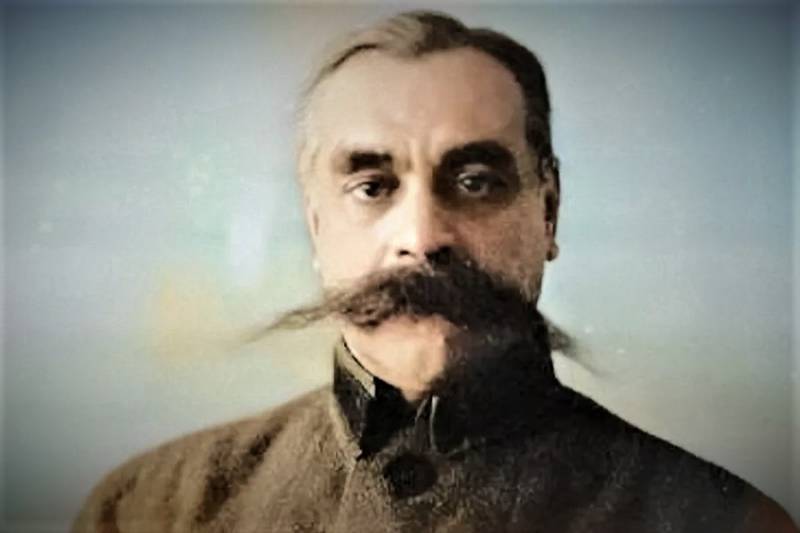
Military surname
When the former tsarist colonel S. S. Kamenev was sent to the Eastern Front, many, especially in the white camp, seriously believed that one of the main Bolsheviks had been appointed commander. Also Kamenev, Lev Borisovich, who at that time led the Moscow Council and the city committee of the RCP (b).
Why be surprised if Trotsky, a close relative, brother-in-law of Lev Kamenev, was in charge of the People's Commissariat for Military and Naval Affairs and the entire defense of the republic, and Ensign Krylenko managed to be noted as commander-in-chief. And the fact that that Kamenev, in fact - Rosenfeld, is not a surname, but a party pseudonym, was known to very few.
In the 30s, after the death of Sergei Sergeevich, the NKVD investigators recalled the similarity of surnames, but they were stopped in time. However, this did not prevent the illustrious Commander-in-Chief of the Red Army, commander of the XNUMXst rank, from being recorded as "enemies of the people." And for many years to erase it from stories revolution and the Civil War, although it is still not easy to understand why, in fact.
He was a professional military man who did not have time to become a general, and took the side of the Bolsheviks almost immediately. He went to the Eastern Front without hunting just because, like many military experts, he considered him fratricidal. Entering the Red Army, Kamenev signed up for the defense of the country from the Germans, or other interventionists.
For almost a year, together with General V. Egoriev, he formed the Western Veil from the remnants of the tsarist army, volunteers and Red Guards. Despite the small number, she held the front until 1920, and did not allow the Germans leaving the occupied regions of Russia to take too much with them. From the fact that they were not due at all under the Brest Peace.
And behind Sergei Kamenev, who was only 36 years old by the revolution, his youth remained in Kyiv, where his father, a colonel engineer, served at the famous Arsenal military plant. All that remained was studies at the Vladimir Cadet School, at the Alexander Military School in Moscow, and then at the Academy of the General Staff in St. Petersburg.
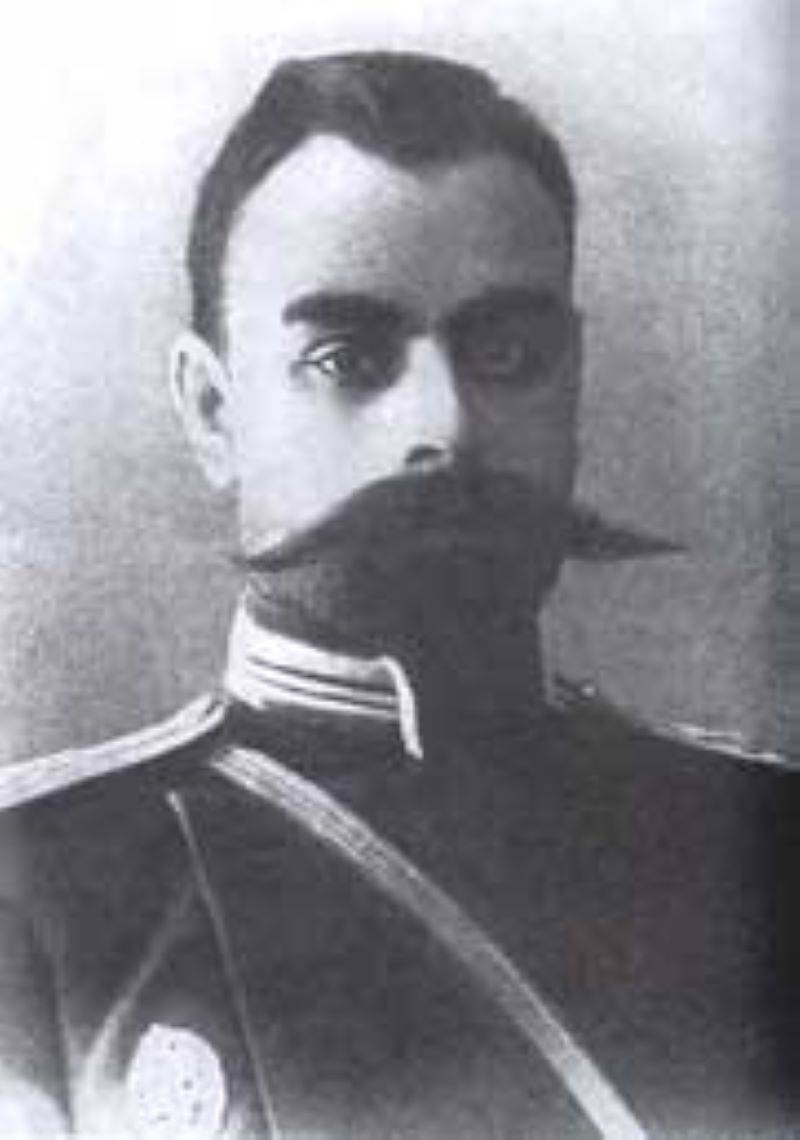
Having the opportunity to enter the service in the guards, Captain Kamenev preferred the modest Lutsk Infantry Regiment, stationed in Kyiv, to be closer to his family. In World War I, he ended up at the headquarters of the 1st Army of General P. Rennenkampf, received the rank of colonel in December 1914, but did not manage to become a general until February 1917. According to the certification, the authorities rated Kamenev as
In March 1917, he left the staff service and took command of the 30th Poltava Infantry Regiment, and after the well-known order No. 1, the soldiers also elected him. In the regiment, Kamenev went through a kind of school of revolution, from the soldiers he got into his hands a collection of G. Zinoviev and V. Lenin "Against the Current".
According to the colonel, he was on him "made a stunning impression, opened new horizons". However, Kamenev did not advocate an end to the imperialist war and cared for his subordinates like few others. The regiment held the front, and its commander did not participate in the fight against the Kornilov rebellion and the October events.
While the old army had not yet completely collapsed, Kamenev headed the headquarters of the 15th Army Corps, and then the 3rd Army. The decision to form the Red Army helped the experienced military specialist, whose good friends since Kyiv times included Lydia Fotieva, Lenin's permanent personal secretary - a fact not too advertised, to remain in military service.
Big changes on the Eastern Front
In leading the Western Veil, Kamenev confirmed his qualities as an excellent organizer. In the conditions of an acute personnel shortage, it was he who was chosen as the commander of the Eastern Front. It is important that he went there together with the 1st Vitebsk division, which he himself formed.
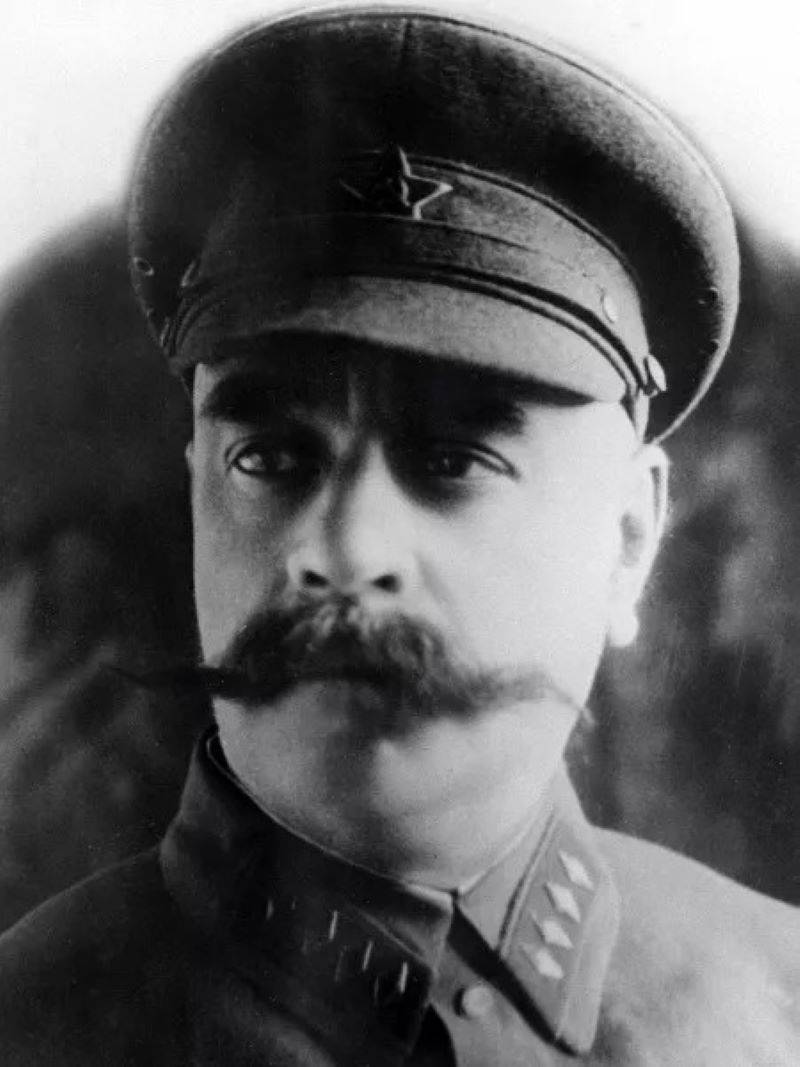
As commander of the front, Kamenev replaced the commander of the Latvian riflemen, Joachim Vatsetis, also a former colonel, who was quite unexpectedly appointed commander-in-chief of the Red Army. He immediately perceived Kamenev as a competitor, criticizing all the decisions of his only com-front at that time.
Not only that, in his opinion,S. S. Kamenev lied in the most shameless way", so he also "some eccentric of the General Staff". Later, in his memoirs, Vatsetis also ironically addressed Kamenev:
Perhaps from Serpukhov, where the Headquarters of Commander-in-Chief Vatsetis was located, and more clearly, however, reality showed that Kamenev in Simbirsk did not just cope, but coped brilliantly. And even the blame for the notorious Perm catastrophe, about which both Stalin and Trotsky later wrote with pathos, could not be blamed on Kamenev.
And what about the brilliantly organized counter-offensive of the Eastern Front, which its commander very timely divided into the Southern and Northern groups, giving them operational independence. The group commanders Shorin and Frunze simply overturned Kolchak's armies in a series of spring operations near Bugulma, Belebey, Buguruslan, Ufa and the same Perm.
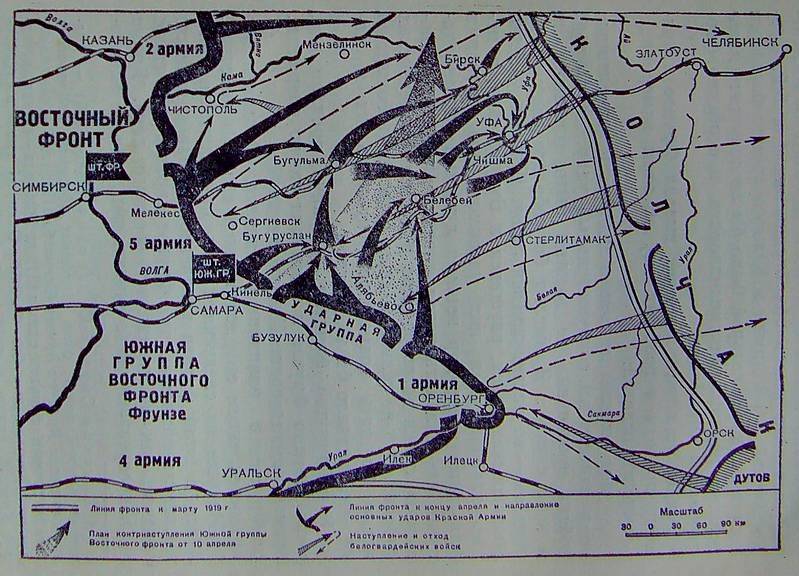
A lot of controversy was also caused by Kamenev's refusal to remove a number of units and formations from the front when they completed the defeat of Kolchak. Perhaps these reinforcements would have helped to hold the front against Denikin, but at that moment they were hardly capable of making a change. As a result, problems would again arise on the Eastern Front, and a general White offensive would threaten on several fronts at once.
Until now, few researchers have appreciated Kamenev's idea "do not pull divisions and brigades on the first occasion", and acting along the internal lines of operations, deliver successive powerful blows to the enemy. Surprisingly, at the height of the fighting, Kamenev was temporarily removed from command.
With the support of Trotsky, Commander-in-Chief Vatsetis sent him on a six-week vacation, which in fact dragged on for only thirteen days. Kamenev left for a forced rest on May 7, 1919, but already on May 20 he returned to the front, it is believed that almost on the personal instructions of Lenin.
Appointed as interim commander of the Eastern Front, General Samoilo himself admitted that he was doing poorly. And the headquarters of the front, formed by Kamenev, staged either a strike or outright sabotage under him, for which at other times he could well go to court in full force.
Mustache of the commander-in-chief
Kamenev's appointment to the post of Supreme Commander of the Red Army took place immediately after the arrest of his predecessor Vatsetis. The new commander-in-chief with headquarters settled in Moscow, where they moved the headquarters from Serpukhov. During the period when Kamenev was supreme, almost all the brightest victories of the Red Army in the Civil War fell.
The defeat of Denikin is not considered to be the merit of the new commander-in-chief, but it certainly could not have happened without him. As in other operations, and by the way, even Trotsky, who really headed both the Red Army and the defense of the republic, admitted that if under Vatsetis an unimaginable mess was sometimes created at the headquarters, then under Kamenev it worked like clockwork.
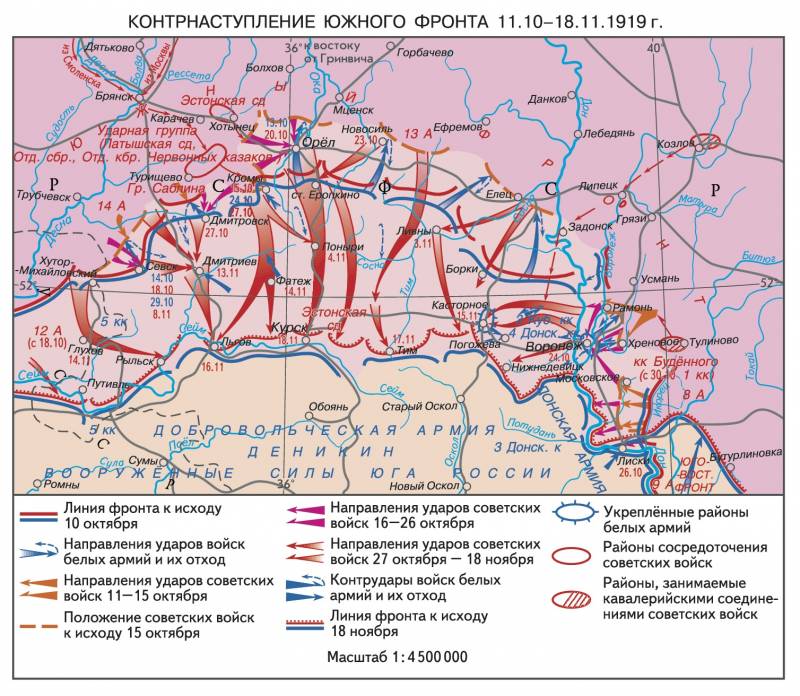
Against Denikin, Kamenev implemented his plan of counteroffensive. In the military-historical literature, one can come across the point of view that exactly
Moreover, the
It sounds unconvincing, since Kamenev at that time had just assumed the post of supreme. And the idea of Vatsetis to overthrow the White front with an outflanking blow on the territory of Ukraine could be realized by transferring very significant forces to the right flank. To do this, perhaps, it would have been necessary to expose the front near Orel, from where Denikin's elite divisions threatened Moscow.
Statements that "after that, they returned to the idea of an offensive in the Ukrainian direction, which Vatsetis had previously proposed under somewhat different conditions' have no basis at all. Decisive were the victories near Orel and Kromy, among other things, with the participation of the Latvian division, as well as near Voronezh and Kastorna, where the First Cavalry Corps of Budyonny especially distinguished himself.
In the autumn campaign of 1920, Kamenev found himself at the very center of the drama unfolding on the Polish front. He, as the commander-in-chief, failed to coordinate the actions of the two fronts - the South-Western under the leadership of the future Marshal A. Yegorov, whose member of the Revolutionary Military Council and representative of the Revolutionary Military Council was I. Stalin, and the Western, where M. Tukhachevsky commanded, also a future marshal.
Instead of a joint offensive in converging directions - to Warsaw from the east and from the southeast, the red fronts actually dispersed. While G. Guy's Cavalry Corps made an excessively deep detour of Warsaw from the north, the red infantry, exhausted in battles, ran into the Polish trenches. And the First Cavalry Army, which could threaten Yu. Pilsudsky with a blow to the flank, was moved by the Red commanders to Lvov.
As a result, the counterattack of only three Polish divisions from the line of the Vepsh River, supported by attacks on the Vistula, turned into a real disaster for the Red Army. However, the Polish historians themselves do not just call those events the “Miracle on the Vistula”. The fact that the direct fault of the Supreme Commander-in-Chief Kamenev was not in the defeat is evidenced by at least the fact that he remained in his post until 1924.
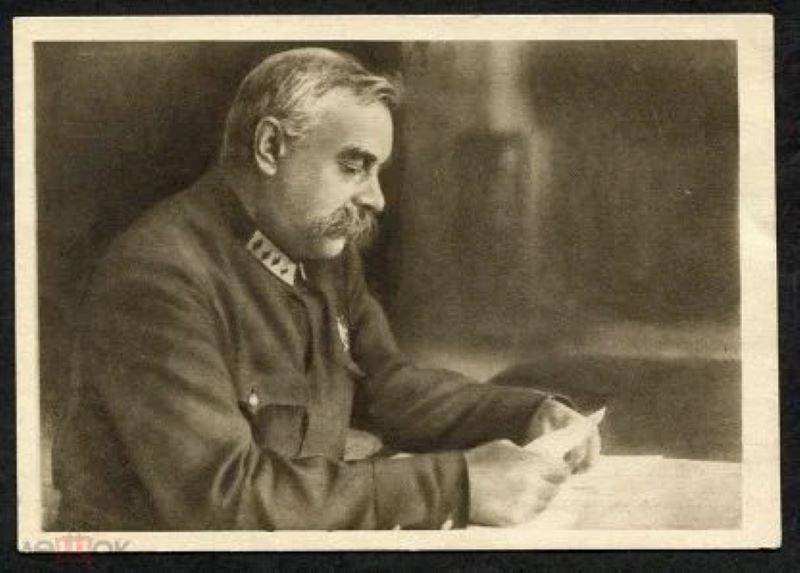
Only then it was decided to liquidate the position itself. That is, during the offensive against Wrangel, and the battles in the Far East, and the fight against the Antonov gangs and the Basmachism, there was one supreme in the Red Army - Kamenev. Since the resignation, Sergei Sergeevich, an authoritative commander-in-chief, who received the Order of the Red Banner for the Civil War and an honorary weapon, became just an inspector of the Red Army.
At that time he was only 43 years old, although to many he seemed almost an old man. The entire Red Army knew the famous mustache of the Commander-in-Chief, no worse than Budyonnovsky. Interestingly, once they stopped his admission to the Academy of the General Staff, the examiners considered the 23-year-old applicant too old. I had to apply within a year.
Kamenev also served as chief of staff and the Main Directorate of the Red Army, deputy people's commissar and head of the Military Academy of the Red Army. M. V. Frunze. He received the rank of commander of the XNUMXst rank, while his subordinates became marshals. Many believe that he died just in time, just a few months before the mass repression.
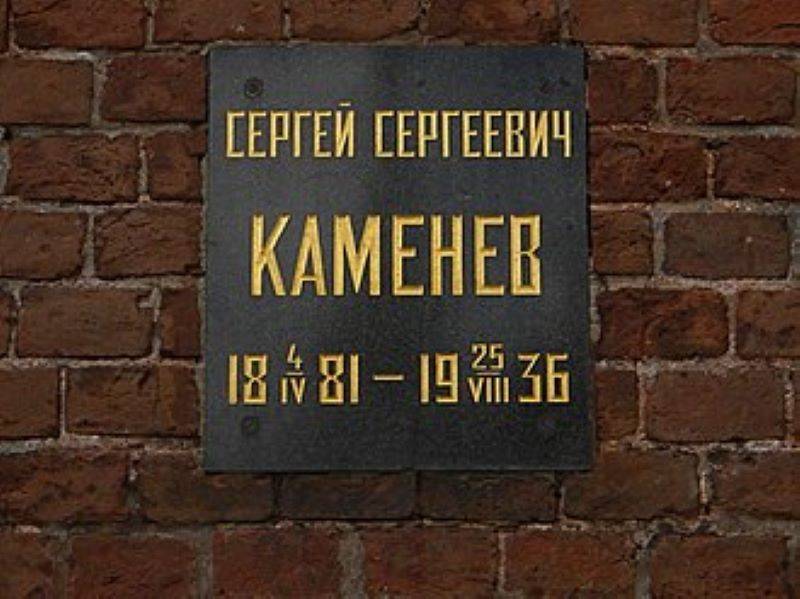
Although his "namesake" Lev Kamenev-Rosenfeld was shot exactly on the same day that Sergei Sergeevich died in Moscow - August 25, 1936. He was declared an "enemy of the people" posthumously, deleted from reference books and encyclopedias, and the copies of his legendary, albeit boring, "Notes on the Civil War and military construction" were destroyed.
All this, however, did not prevent the preservation of the urn with the ashes of the "real" Kamenev in the Kremlin wall. Sergei Sergeevich.
- Alexey Podymov
- storage.yandexcloud.net, bigenc.ru, itemimg.com, rus.team, ria1914.info
Information